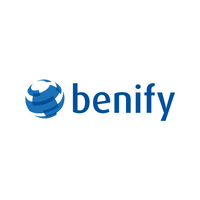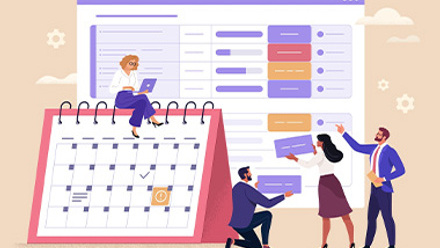Ways to use technology to personalise communications and still appeal to everyone

Now, let’s turn our attention to the workplace and specifically internal communication. According to projections from Statista, approximately 269 billion emails were sent and received every day during 2017, and that figure is expected to grow to almost 320 billion daily emails next year. Furthermore, Radicati Group found that between 2014 and 2018, the average office worker received about 90 emails a day and sent around 40 business emails daily.
How can our brains possibly process all this information?
Created just for you
To answer the above question, think about what happens whenever you stream a video or song through one of the many streaming services. Not only can you listen or watch whatever you like, whenever you like, and on any device, but you’re immediately given personalised recommendations based on your online behaviour, history and preferences.
These algorithms, used to curate content for you, mean that every time you use the app, you’re shown content that is relevant to you. In fact, this applies to almost everything online. As one Forbes article notes: “Google, Instagram or Amazon are perfect examples of how ads, ideas and interests are directed to us through ‘behavioural targeting’, that is, by using our profiles to push stuff to our screens, a process that is also referred to as personalisation.”
In today’s digital world, personalisation is the only way we can cypher through the sheer volume of information “out there” and see what is relevant to us.
One-size-fits-none
Thanks to the personalised experiences of streaming services and e-commerce sites, employers are having to rethink the way they communicate with employees.
Put simply, the more personalised the communication is, the more effective it is. Yet, even with this knowledge, many companies today still lack effective communication tools and methods. An Ark Group survey among CEOs showed that almost 95% of those surveyed said ‘effective internal communication’ was critical. However, only 22% thought that effective internal communication was being delivered.
Today, we see baby-boomers, Generation X, millennials and Generation Z all sharing the workplace. But it’s through the recent arrival of Gen Z that means a “one-size-fits-all” approach for communication no longer cuts it.
There’s an app for that
So, how can you use technology to personalise communications and still appeal to everyone? The answer is targeted communication through mobile devices.
Did you know that 82% of employees keep their phones within eye contact while at work, according a 2016 survey carried out by CareerBuilder in the US. This gives employers a huge advantage; employees are frequently checking their phones and immediately see when they receive a new notification or message. Employers, fear not, according to 2014 research carried out by Salesforce, 60% of the apps employees use at work are, in fact, work-related.
We’ve all heard the expressions, “there’s an app for everything” or “there’s an app for that”, yet, the Salesforce research also showed that 59% of employees say organisations are too slow at incorporating apps into their business.
Today, most leading organisations are using a benefits administration portal or employee portal, which enables employees to access information about their employment, including payslips and employee benefits. By opting for a portal that has its own app, employers can reach their employees on the device that’s always with them. This allows employers to send push notifications, SMS messages or in-portal messages directly to reach and engage their workforce anywhere, anytime.
Ready, aim, fire
By using targeted communication through your benefits administration portal’s communication tool, you can adapt and tailor messages to specific audiences, which is vital to personalisation.
To make your communications personalised yet still appealing to everyone, first, think about the message you want to communicate. Next, use the filters in your communication tool to send messages to specific departments, age groups, countries or even individuals enrolled (or not yet enrolled) in a specific benefit. Then, select which channels you wish to use.
While the content of the message itself is important, knowing what communication channel(s) each generation prefers is also crucial when it comes to personalisation. With Generation Z entering the job market at a rapid rate, companies should make use of platforms such as Slack, Facebook, WhatsApp, LinkedIn and Snapchat.
Personalisation is the future of communication, and the future is already here.
This article is provided by Benify.
Supplied by REBA Associate Member, Benify
Benify offers the market's leading global benefits and total reward platform.







